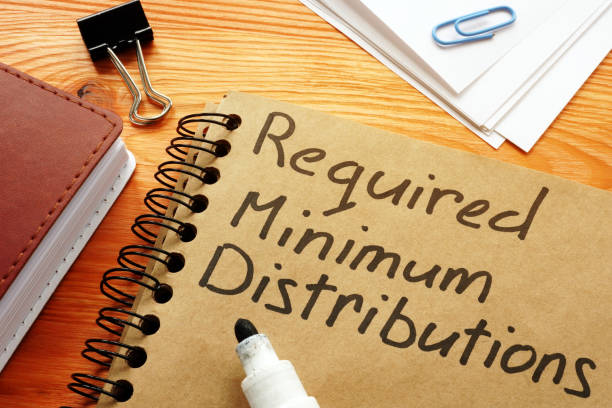Fees, Fiduciary Support, and Participant Experience
Choosing the right 401(k) provider is one of the most important financial decisions an employer can make. As we move into 2026, expectations for retirement plans are higher than ever—from fee transparency and fiduciary protection to technology and employee engagement.
If you’re evaluating your current plan or considering a new provider, here’s what truly separates a top-tier 401(k) provider from the rest.
Why Choosing the Right 401(k) Provider Matters
A 401(k) plan is more than a benefit—it’s a long-term commitment to your employees’ financial future and your company’s compliance responsibilities.
The right provider can:
-
Reduce fiduciary risk
-
Improve employee participation and retirement readiness
-
Lower overall plan costs
-
Save employers time through better support and administration
The wrong provider can lead to hidden fees, compliance issues, and disengaged employees.
Transparent and Reasonable 401(k) Fees
Clear Fee Disclosure (No Surprises)
One of the biggest red flags in a 401(k) plan is unclear or layered fees. Top 401(k) providers prioritize transparency, ensuring employers understand:
-
Administrative fees
-
Investment expense ratios
-
Advisor or fiduciary fees
Everything should be clearly disclosed—without confusing language or buried costs.
Value Over “Cheapest Option”
Low fees matter, but the cheapest plan isn’t always the best plan. A quality provider balances cost with services like fiduciary oversight, employee education, and compliance support. Paying slightly more for the right structure can save significant money—and risk—over time.
Strong Fiduciary Support and Compliance Expertise
ERISA Fiduciary Protection
A top 401(k) provider helps employers meet their ERISA responsibilities and often offers:
-
3(21) or 3(38) fiduciary services
-
Investment oversight and monitoring
-
Documentation to support fiduciary decisions
This protection is critical as regulations and litigation risks continue to increase.
Proactive Compliance Guidance
Rather than reacting to problems, great providers help prevent them. This includes:
-
Ongoing plan reviews
-
Support with nondiscrimination testing
-
Help navigating regulatory changes
Compliance should feel supported—not stressful.
A Better Experience for Plan Participants
Employee Education That Actually Works
Top providers understand that a 401(k) only succeeds if employees use it. Look for providers that offer:
-
One-on-one retirement guidance
-
Educational workshops or webinars
-
Easy-to-understand resources
When employees feel confident, participation and contribution rates rise.
User-Friendly Technology and Tools
Modern employees expect modern tools. A strong 401(k) provider offers:
-
Intuitive online dashboards
-
Mobile access
-
Simple enrollment and contribution changes
Ease of use plays a major role in long-term engagement.
Personalized Service and Ongoing Support
Dedicated Plan Support
Employers should never feel like just another account number. Top 401(k) providers offer:
-
Dedicated plan contacts
-
Fast response times
-
Clear communication
This level of service is especially valuable during audits, employee transitions, or plan changes.
Strategic Plan Design Assistance
The best providers go beyond administration by helping employers:
-
Design competitive employer matches
-
Improve participation rates
-
Align the plan with business goals
A well-designed plan benefits both employees and the company.
How to Evaluate Your Current 401(k) Provider
Ask yourself:
-
Do we fully understand our fees?
-
Are we confident in our fiduciary protection?
-
Are employees engaged with the plan?
-
Do we receive proactive guidance and support?
If the answer to any of these is “no,” it may be time for a review.
The Advantage of Working With an Independent 401(k) Advisory Firm
One of the most common concerns employers have when reviewing their 401(k) plan is the fear of disruption. Many assume that working with a new advisor automatically means switching providers—but that isn’t always the case.
As an independent 401(k) advisory firm, we are not tied to any single recordkeeper, investment platform, or product provider. That independence allows us to work with virtually any 401(k) provider, giving employers flexibility and options—without unnecessary changes.
No Provider Change Required
If your current 401(k) provider is a good fit operationally, there may be no need to switch. Instead, an independent advisor can:
-
Evaluate your existing plan structure
-
Review fees and investment lineups
-
Enhance fiduciary oversight and documentation
-
Improve employee education and engagement
All while keeping your current provider in place.
Unbiased Advice in Your Best Interest
Because independent firms are not incentivized to promote one provider over another, recommendations are based solely on what’s best for your plan and your employees. This results in:
-
Objective plan evaluations
-
Transparent fee analysis
-
Solutions tailored to your company’s goals—not a sales quota
Flexibility Now and in the Future
Independence also means flexibility as your business grows. If your needs change over time, you’re not locked into a single provider ecosystem. Instead, you have the freedom to evolve your plan—on your timeline, not someone else’s.
Choosing a 401(k) Provider for 2026 and Beyond
A top 401(k) provider doesn’t just offer a plan—they offer partnership, protection, and peace of mind. As retirement planning continues to evolve, employers need providers who are transparent, proactive, and focused on both compliance and employee success.
If you’re unsure whether your current plan measures up, a professional 401(k) review can help identify opportunities to improve outcomes for both your business and your employees. Schedule a complementary review today!












